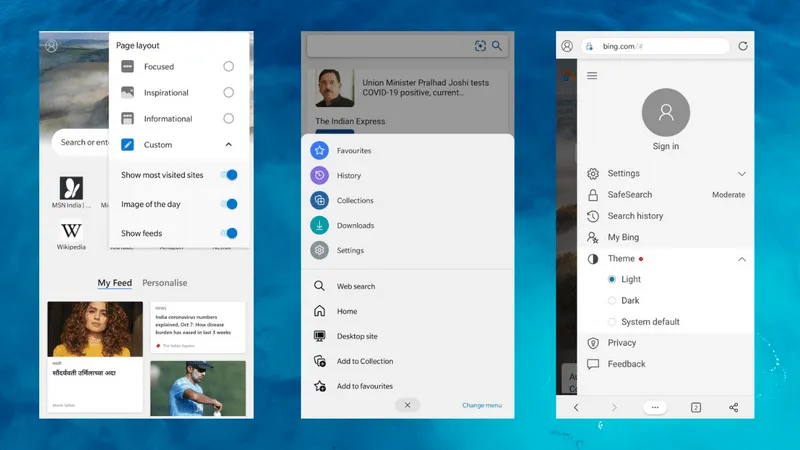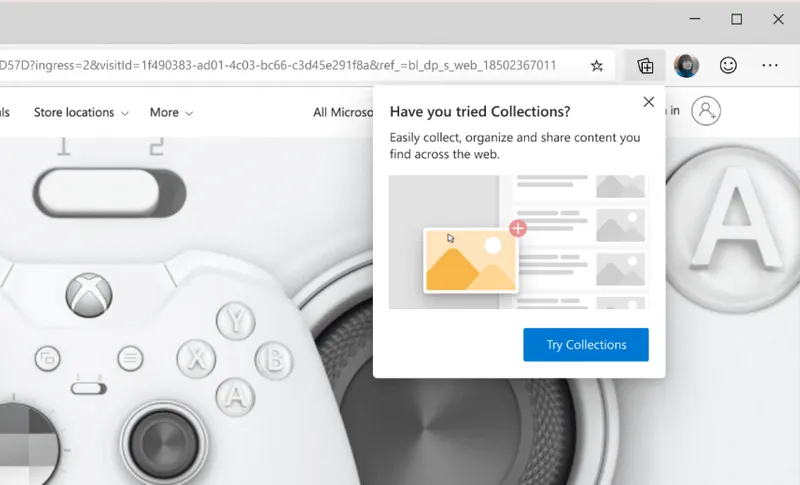[App Fridays] Why Microsoft Edge is worth all the noise in the world of web browsers
Microsoft Edge is fast gaining popularity beyond the tech community. The web browser scores high on privacy, personalisation, and performance fronts.
If you’ve ever joked about or shared memes on Internet Explorer — most likely the first web browser for many of us — or even wondered why Microsoft wouldn’t build a more modern browser than IE, it has. And how!
Meet Edge, Microsoft’s new sleek, speedy, battery-light, and personalised web browser that keeps up with modern user requirements, and is rightfully keeping tech circles occupied.
The software giant launched Edge in 2015 on Windows 10 and Xbox One. Two years on, in 2017, Edge rolled out on Android and iOS, leading to its first phase of adoption.
The browser reached MacOS in 2019, and is beta launching on Linux (targeted at enterprise users) later in October. What really upped Edge usage globally was the release of its Chromium-based version earlier in 2020. (Chromium is a free and open-source software project from Google and also renders Chrome and Opera).

Edge is designed around five core propositions: a) high speeds b) data privacy and security, c) personalised browsing and reading, d) organisation of web clutter and increased productivity, and e) continuous browsing and cross-device syncing.
It also offers nifty features such as visual search, voice search, password monitor, vertical tabs (for multitasking), reading mode (that strips pages of unnecessary formatting to improve readability), annotations on web pages, Read Aloud (where a voice bot reads out a page), and storing-syncing-sharing through Microsoft OneDrive.
Interestingly, Edge is also compatible with several Chrome extensions, which makes it more user-friendly and easier to migrate.
It has crossed 10 million downloads on Google Play Store, and is rated 4.5 out of 5.

Photo: Windows Report
How to browse on Edge
Edge can be both a signed-in and signed-out experience.
However, without signing in, you lose out on personalisation features like reading lists, passwords, payments information, saved pages, autofill, etc.
Edge opens in a default homepage that has a search tab (for text, image and voice searches), quick access icons for Microsoft-owned portals (MSN, , MS Store) and some popular apps (Amazon, Netflix, Twitter, YouTube), an image of the day, and My Feed (genre-based news and videos).

Even though the homepage contains default elements, you can customise its appearance by selecting from ‘Focused’, ‘Inspirational’, or ‘Informational’ avatars from a drop-down menu on the right.
You can also add your most visited sites to the homepage, and enable SafeSearch.

Edge lets users protect their privacy and makes browsing secure.
It comes with a default tracking prevention (that blocks trackers from sites you are not accessing directly), an AdBlock Plus (that prevents pop-up ads and makes browsing non-intrusive) and InPrivate mode (incognito mode that doesn’t store cookies, autofill details, browsing history or temporary files).
You can turn on ad blocking from the Settings menu, while InPrivate mode from the bottom menu bar. The menu can be customised too.

The latest feature on Edge is Collections, which as per Microsoft, is in accordance with changing browsing habits in the aftermath of the pandemic.
Collections allows you to easily collect and organise information from different websites, export it into various files or just resume browsing right where you left off. These could be favourite reads, or team meetings you may have joined through the browser, frequently visited news sites, and so on.

Edge also packs in a bunch of smart features like immersive reader, text zoom, auto-translate, contextual search, and language-based personalisation — users can opt for Indian English, Hindi, Bengali, Marathi, and other scripts.
An ‘edgy’ browser from Microsoft at last
Microsoft is often criticised for not upping the ante in its consumer products.
The Nokia debacle, the phasing out of MSN, and the inability of Skype to take on Zoom in what is the biggest remote-working wave in human history, is well documented. Not to forget the constant digs at “slow” Internet Explorer.
Edge, however, seems to be the answer to all these accusations.
It not only matches up to the feature-richness of Chrome, but also scores on the personalisation, privacy, and performance fronts.
Given Chrome’s recent glitches and crashes, and the mounting security concerns around Google’s tracking mechanisms, Edge has gained popularity beyond the tech community. One search on Twitter reveals how casual users are also migrating to it.
A user wrote in a Play Store review, “Edge runs faster, smoother, [is] kinder to the battery, less buggy than Chrome. The tab, menu, and back/forward buttons are placed easily for single-hand use, with several extra options a swipe away.”
The enterprise tech giant has served an ‘edgy’ consumer product at last!
Edited by Teja Lele


![[App Fridays] Why Microsoft Edge is worth all the noise in the world of web browsers](https://images.yourstory.com/cs/2/dc9aa1302d6c11e9aa979329348d4c3e/MSEdge1-1602151495349.png?mode=crop&crop=faces&ar=2%3A1&format=auto&w=1920&q=75)
![[App Fridays] MagTapp, a made-in-India image browser and document reader, has over 1M users](https://images.yourstory.com/cs/2/dc9aa1302d6c11e9aa979329348d4c3e/appfriday1-1593600750117.png?fm=png&auto=format&h=100&w=100&crop=entropy&fit=crop)
![[App Fridays] Plant trees as you browse with pro-privacy search engine Ecosia](https://images.yourstory.com/cs/2/dc9aa1302d6c11e9aa979329348d4c3e/App-friday2-1583987255645.png?fm=png&auto=format&h=100&w=100&crop=entropy&fit=crop)
![[App Fridays] Reliance’s JioBrowser is emerging as a leading ‘Made in India’ mobile browser](https://images.yourstory.com/cs/2/dc9aa1302d6c11e9aa979329348d4c3e/appfriday11-1597247769375.png?fm=png&auto=format&h=100&w=100&crop=entropy&fit=crop)




